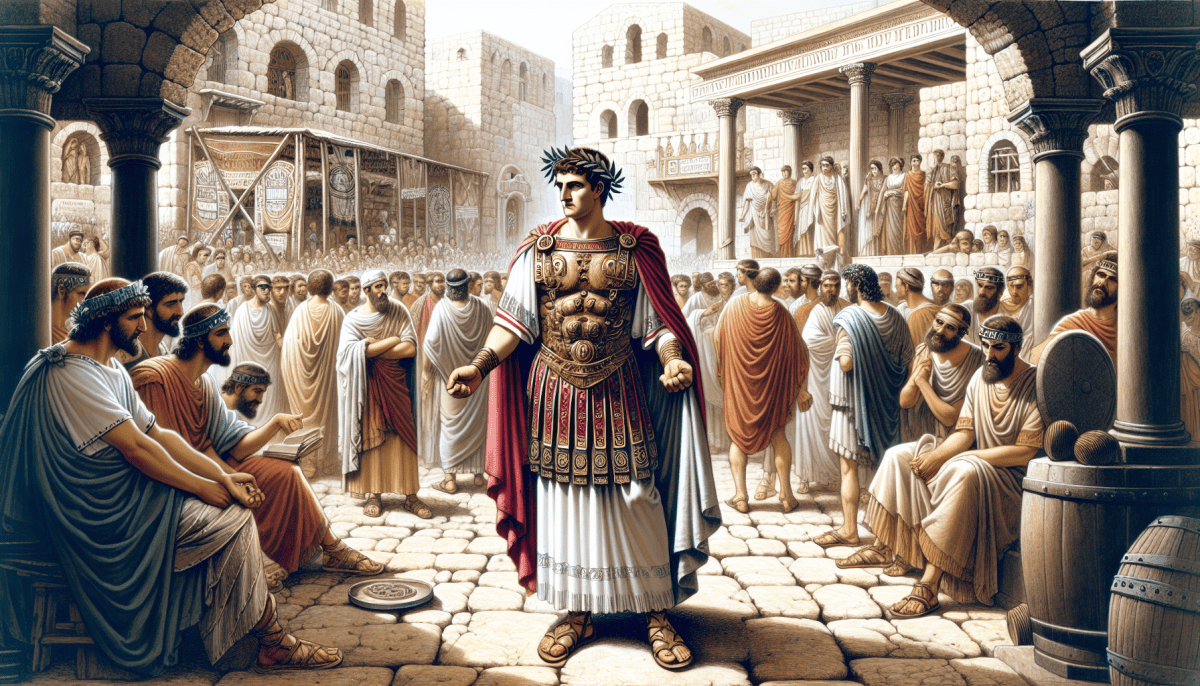The Enigmatic Figure of Pontius Pilate: Unraveling History
The story of Pontius Pilate, the Roman prefect of Judea, has intrigued historians, theologians, and the curious for centuries. His role in the trial and crucifixion of Jesus Christ marks him as a pivotal figure in Christian narratives, yet much of his life remains shrouded in mystery. This article delves into the history of Pontius Pilate, exploring his background, governance, and the lasting impact of his actions.
Who Was Pontius Pilate?
Early Life and Rise to Power
Pontius Pilate's early life is largely undocumented, with historical records primarily focusing on his tenure as the prefect of Judea from AD 26 to 36 under Emperor Tiberius. Pilate's ascent to this position suggests he had a military background and was of equestrian rank, which was typical for Roman governors of provinces.
Governance in Judea
As the Roman prefect, Pilate was tasked with maintaining law and order in Judea, a region known for its unrest and resistance to Roman rule. His administration is characterized by a blend of diplomacy and brutality. Pilate's governance was marked by several controversial decisions, including the use of Temple funds to build an aqueduct and placing Roman emblems within Jerusalem, which incited anger among the Jewish population.
The Trial and Crucifixion of Jesus
The Historical Account
Pilate's role in the trial of Jesus Christ is the most documented aspect of his life, primarily through the Gospels. According to these accounts, Pilate initially found no fault in Jesus and attempted to release him. However, facing pressure from the Jewish authorities and the crowd, Pilate ultimately consented to Jesus' crucifixion. This pivotal moment is crucial in understanding Pilate's historical and religious significance.
Pilate's Dilemma
Pilate's decision reflects the delicate balance he tried to maintain between appeasing the Roman Empire and managing local tensions. His actions during the trial of Jesus highlight the complexities of Roman governance in volatile provinces like Judea.
Archaeological Discoveries and Historical Records
The Pilate Stone
A significant piece of evidence confirming Pilate's existence and role in Judea is the Pilate Stone, discovered in 1961 in Caesarea Maritima. This stone inscription is the only known occurrence of Pilate's name in archaeological records, providing tangible proof of his governance.
Historical Writings
Besides the Biblical accounts, historical references to Pilate are found in the writings of Flavius Josephus and Tacitus. These sources offer additional perspectives on Pilate's character and his governance, painting a picture of a pragmatic and, at times, ruthless leader.
Legacy and Interpretations
Pilate in Christian Theology
Pilate's legacy is complex, especially within Christian theology. He is seen as both the man who washed his hands of Jesus' fate and as a figure used by divine providence to fulfill prophecies.
Modern Interpretations
Contemporary scholars continue to debate Pilate's motivations and the extent of his culpability in Jesus' death. His character has been the subject of various interpretations in literature, film, and art, reflecting the enduring fascination with his role in one of history's most significant events.
Pontius Pilate remains an enigmatic figure whose life and actions continue to provoke interest and debate. Through the lens of history, archaeology, and theology, we gain insights into the complexities of Roman rule in Judea and the pivotal moments that have shaped religious and historical narratives for millennia. As new discoveries emerge, the story of Pontius Pilate invites ongoing exploration and reinterpretation, keeping the dialogue about this fascinating figure alive.
The fate of Pontius Pilate after his tenure as the prefect of Judea is somewhat shrouded in mystery and subject to various historical and religious accounts. Historical sources provide limited information about his life post-governorship, leading to speculation and differing interpretations.
Historical Accounts
According to some historical narratives, particularly those derived from Christian tradition:
- Removal from Office: Pilate was removed from his position as prefect of Judea by Emperor Caligula around AD 36, due to his harsh treatment of the Samarians during a disturbance on Mount Gerizim. He was then ordered back to Rome to explain his actions but was reportedly either exiled or fell out of favor before or upon his arrival, depending on the source.
- Exile and Death: There are claims, mostly from later Christian sources, that Pilate was exiled by Caligula, possibly to Gaul (modern France), where he is said to have eventually committed suicide. However, these accounts are speculative and not firmly supported by contemporary historical evidence.
Religious and Apocryphal Accounts
In addition to historical accounts, there are several religious and apocryphal stories about Pilate's fate:
- Early Christian Tradition: Some early Christian narratives suggest that Pilate converted to Christianity and was later canonized as a saint in certain branches of Christianity, including the Ethiopian Orthodox Church. However, this view is not widely accepted across all Christian denominations.
- Legends and Myths: Various legends have arisen around Pilate's end, including the claim that his body was thrown into a body of water, known as Lake Pilate in Switzerland, which was then haunted by his restless spirit. These legends are more reflective of the cultural and mythological attempts to moralize his role in the crucifixion of Jesus rather than historical facts.
Historical and Archaeological Evidence
There is a lack of concrete historical and archaeological evidence to conclusively determine Pilate's ultimate fate. The Pilate Stone, discovered in Caesarea, confirms his historical existence and role in Judea but does not provide information about his life after his governorship.
The exact details of Pontius Pilate's life after his term as prefect of Judea remain uncertain, with available sources providing a mix of historical accounts, religious traditions, and legends. His fate, much like aspects of his governance, is enveloped in the broader mysteries of ancient history, leaving room for ongoing research and interpretation.







